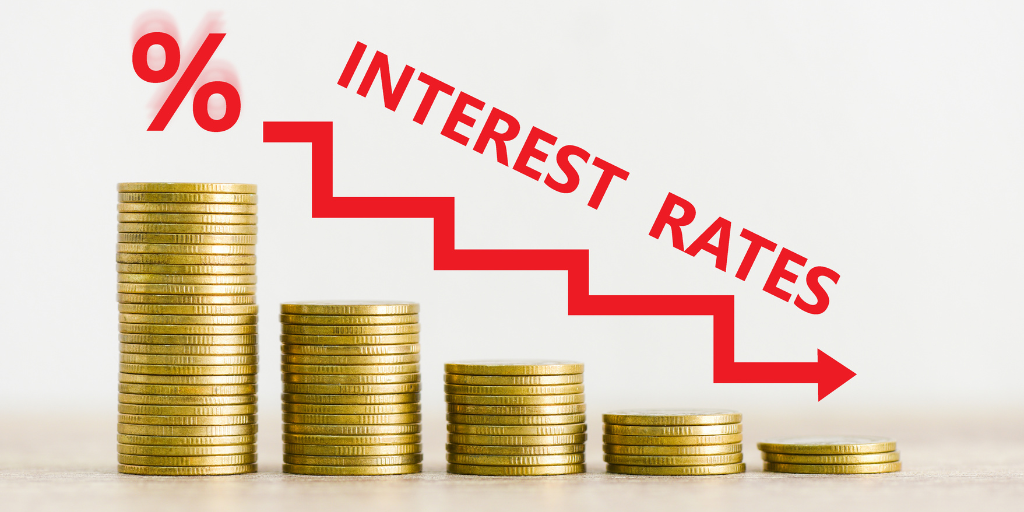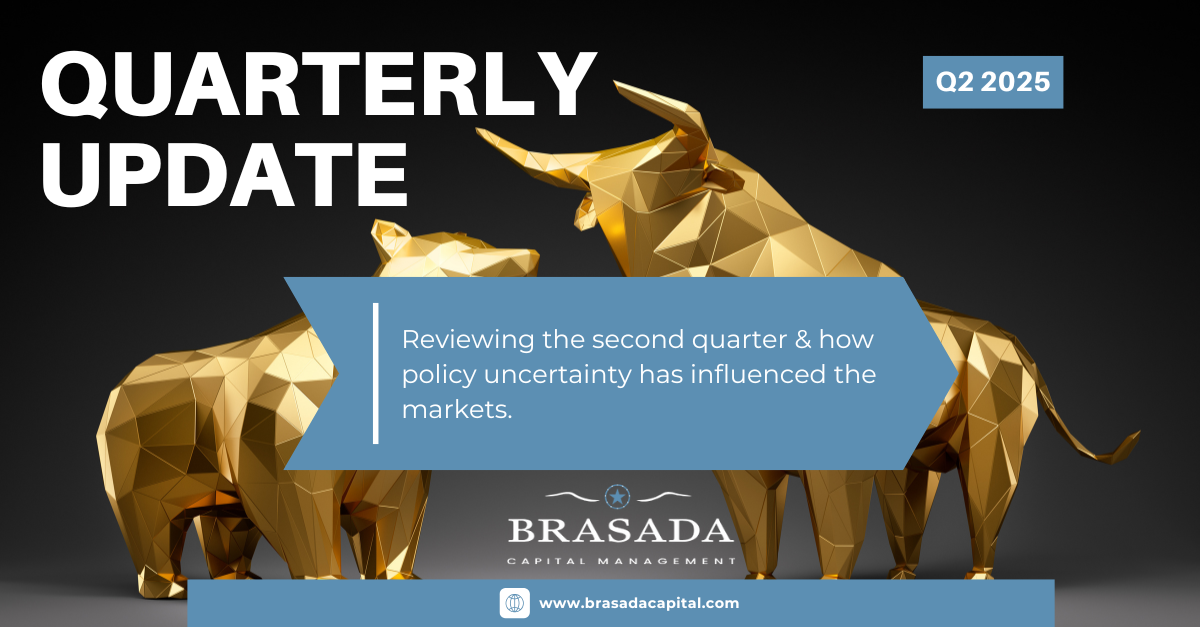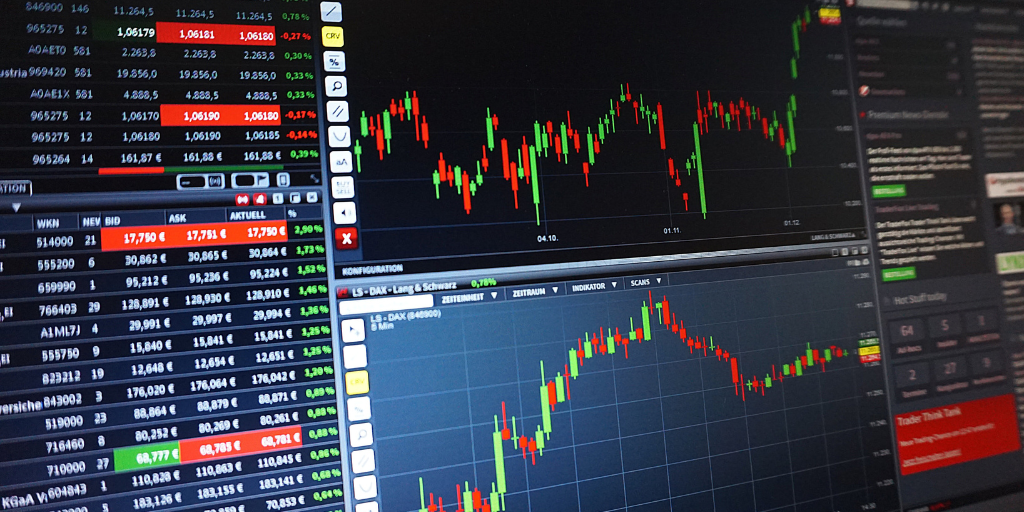Second Quarter of 2025
“Far more money has been lost by investors preparing for corrections or trying to anticipate corrections than has been lost in corrections...
4 min read
 Guy Davis, CFA
:
Sep 12, 2024 2:33:55 PM
Guy Davis, CFA
:
Sep 12, 2024 2:33:55 PM

The Impact of Falling Interest Rates on Asset Markets
By Guy Davis, CFA
Interest rates are a fundamental component of the global financial system, influencing everything from consumer behavior to corporate investment and asset pricing. Understanding how interest rates impact equity markets, bond markets and cash is critical to making informed investment decisions.
Historical Low Interest Rates Post-GFC
We’ve been through quite the ride in interest rates during the last 15-20 years. Central banks around the world reacted to the Global Financial Crisis (GFC) of 2008 by beginning a prolonged period of historically low interest rates, in addition to launching unprecedented levels of quantitative easing (QE). This ultra-low rate environment persisted for much of the 2010s; the longest period of near zero interest rates in history. There were only gradual rate rises in the latter part of the decade, which were then quickly reversed at the onset of the COVID-19 pandemic in 2020, resulting in a swift return to near-zero rates as central banks sought to mitigate the economic impact of widespread lockdowns.
The Rapid Rise in Rates After COVID-19
Having cut rates at the beginning of COVID, as the world began to re open in 2021 and 2022, inflation began to surge across the world led by supply chain disruptions, labor shortages and surging pent up demand. All these elements together pushed inflation to over 9% (as measured by the CPI). Well above the Federal Reserve’s 2% target and the highest levels the US has seen in over 40 years.
This led the Federal Reserve (and most central banks) into rapid interest rate rises beginning in 2022. It wasn’t just the size of the increases that were a shock to markets, but also the speed with which they occurred. The rate of increase was unprecedented in recent history.
The federal funds rate went from 0.25% to over 5.00% within just 12 months- the fastest pace of rate increases since the early 1980s.

This rapid rate hike cycle had immediate and significant effects across all asset classes. Arguably most severe were the spike in bond yields. As interest rates rose, bond prices fell pushing yields higher. The yield on the 10-year Treasury spiked from below 1% in early 2021 to over 4% by late 2022.
Equity markets experienced sharp corrections as the discount rate on future earnings increased, and credit conditions tightened for corporates.
So Why Are Interest Rates Falling Across the World Now?
A number of central banks have cut interest rates already, and the Federal Reserve are poised to follow suit very soon. This current global trend of falling interest rates can be attributed to several factors, reflecting both short-term economic conditions and longer-term structural changes in the global economy.
As it prepares to cut rates, the Federal Reserve is arguably navigating one of its most challenging tasks: achieving a "soft landing". A soft landing refers to the process of slowing down economic growth enough to curb inflation without causing a recession.
Historically, successful soft landings have been rare. The Fed has managed it only a few times, such as the mid-1990s under Alan Greenspan. However even then, the success was partly due to favorable external conditions such as significant technological advancements that boosted productivity (will AI do the same for us now perhaps?). On the other hand, attempts to achieve a soft landing in both the late 1960s and early 2000s were less successful.
The challenge today is compounded by lingering uncertainties such as the ongoing effects of global supply chain disruptions and geopolitical tension. The Fed’s current strategy seems to be to ease rates gradually, hoping to avoid the sharp economic contractions that have historically followed aggressive tightening cycles.
What do falling interest rates mean for the main asset classes?
Stocks: Usually positive
Equity markets generally respond favorably to falling interest rates due to the lower cost of capital, which can not only boost corporate profitability but also increase the attractiveness of stocks relative to other assets- if you receive very little return on your cash, you need to take more risk to generate a return, so investors move up the risk spectrum. However, the relationship between interest rates and equity markets does vary depending on the underlying economic context for the rate rises- it’s not so much that rates are rising, but why they’re rising.
Currently, the equity market’s response to interest rates will likely be influenced by broader economic conditions, particularly inflation and growth expectations. While current interest rates remain low by historical standards, the risk of inflation may prompt the Fed to raise rates more aggressively than anticipated. This could pressure high-multiple stocks (think Magnificent 7) which have arguably benefited the most from low rates, while potentially favoring more recently unloved companies with stable cash flows and lower sensitivity to rate increases.
Bonds: Usually Positive
Bond prices are directly influenced by changes in interest rates. As interest rates fall, the prices of bonds tend to rise, as their fixed payments become more attractive relative to prevailing cash rates, or the rates on newly issued bonds (which tend to fall as interest rates do).
As rates were so low for so many years, bonds offered little in the way of either total return or income production. Now, as rates have risen and are now set to fall once again, bonds look much more attractive.
However, investors need to ensure they continue to focus on credit quality going forwards- particularly as recession risks are rising.
The Impact on Cash: Usually Negative
Cash holdings are generally considered the safest asset class, but in a lower interest rate environment, the opportunity cost of holding cash can be significant. When interest rates are low or falling, the real return on cash (after accounting for inflation) is often negative, eroding purchasing power over time.
As the returns on cash diminish, many savers and investors will find themselves needing to move up the risk spectrum to maintain their previous returns- investing in bonds and equities for example, in order to meet their return targets.
Disclaimer: This post is for information purposes only and should not be construed as an offer or solicitation for the sale or purchase of any securities. Past performance is no guarantee of future performance. The information provided is believed to be from reliable sources, but no liability is accepted for any inaccuracies. Brasada Capital Management, LP is an investment adviser registered with the U.S. Securities and Exchange Commission. Registration does not imply a certain level of skill or training. If you have any questions, please contact our team.

“Far more money has been lost by investors preparing for corrections or trying to anticipate corrections than has been lost in corrections...

UNDERSTANDING TARIFFS: ECONOMIC IMPACT, RATIONALE AND CONTROVERSIES

Market Selloff Dear Clients and Friends, Thursday and Friday marked the 4th time in the last 50 years when the S&P 500 had a 2-day drop of over...